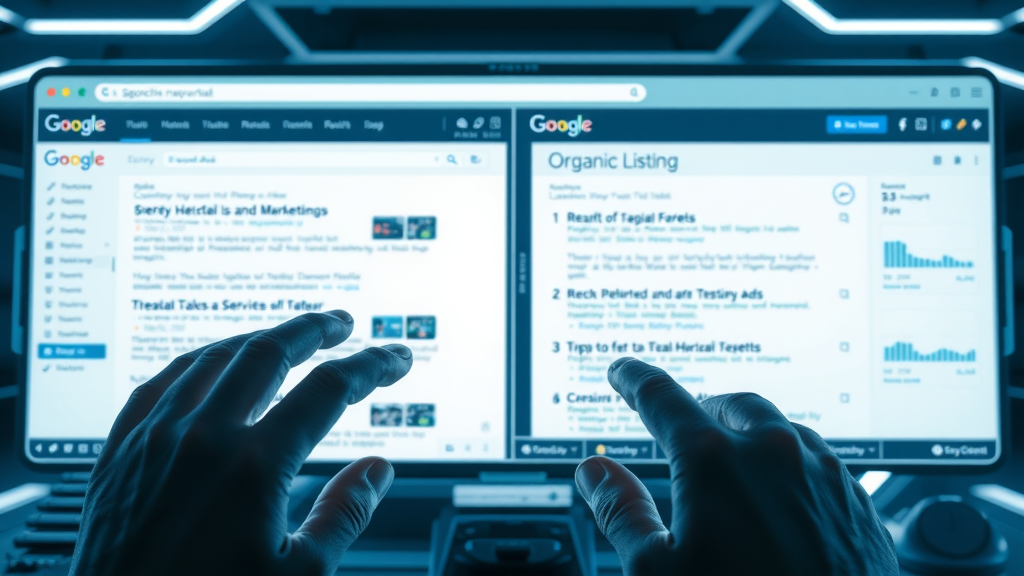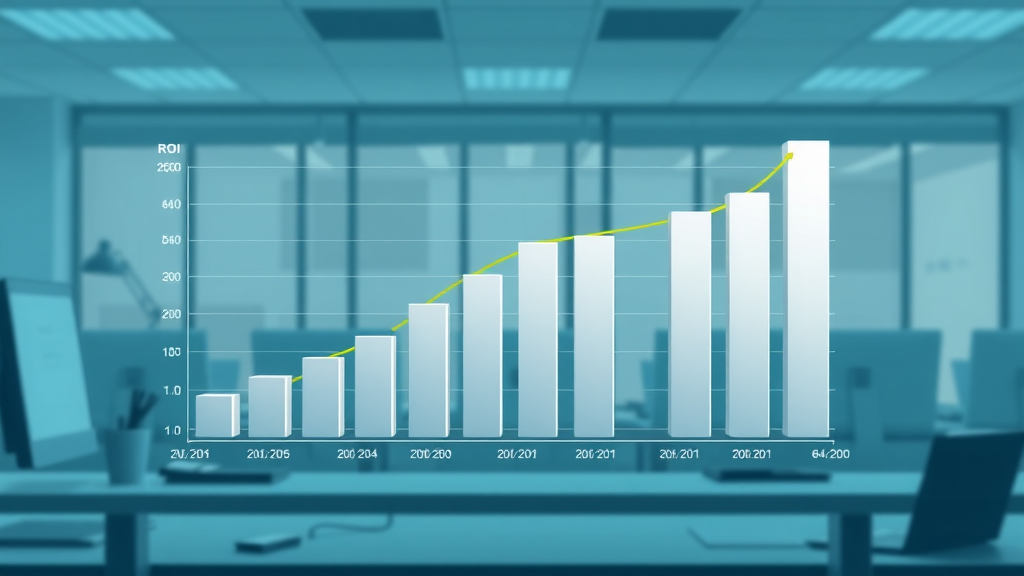Did you know that companies prioritizing organic traffic experience 2.8 times more revenue growth than those relying mainly on paid traffic sources? The battle between paid vs organic traffic has become a central debate in digital marketing circles—with every expert staking a claim. If you’ve ever wondered whether ads or SEO will bring you the best results and help your business grow faster, you’re not alone. This comprehensive guide dives deep into the mechanics, costs, and real outcomes of each method, empowering you to make the smartest marketing choices that fit your goals and budget.
Discover the Impact: Why Paid vs Organic Traffic Shapes Your Digital Marketing Strategy
Did you know that companies prioritizing organic traffic experience 2.8 times more revenue growth than those relying mainly on paid traffic sources?

At the heart of digital marketing lies the critical decision between investing in paid traffic and building organic traffic . Both traffic sources have the power to shape your brand’s online presence. Paid traffic, driven largely by paid search and paid ads on platforms like Google Ads, delivers quick visibility—allowing your brand to reach the top of the search engine results page instantly. In contrast, organic traffic is earned through search engine optimization (SEO) —a strategy that focuses on creating valuable content, building backlinks, and ranking highly in unpaid search results . Each approach attracts a different audience and influences website traffic growth in unique ways.
Understanding the difference is crucial for aligning your marketing strategy with your business goals. For example, a new product launch may benefit from the rapid reach of a paid campaign, while sustainable growth for your website is best anchored in organic traffic built from ongoing SEO best practices. Let’s sharpen your understanding of how each traffic source can shape outcomes—and how combining both can power up your results in any market.
What You'll Gain: Navigate Paid vs Organic Traffic for Digital Marketing Success
- Understand key differences between paid traffic and organic traffic
- Evaluate which traffic source fits your business goals
- Apply SEO best practices and paid campaign tactics
- Leverage search engine optimization and paid search together for maximum results
Defining Paid vs Organic Traffic: Foundations Every Marketer Needs
What is Paid Traffic vs Organic Traffic?
Paid traffic refers to website visitors who arrive after clicking on paid advertisements—these could be search engine ads (like Google Ads ), display ads, or paid placements on social media platforms . With paid search , your brand effectively rents a spot atop the search engine results page by bidding on keywords your audience is searching for.
On the other hand, organic traffic is naturally earned through effective search engine optimization and content marketing, without any direct payment for clicks. Visitors discover your website through unpaid, “organic” listings in search engines, responding to factors like relevance, authority, and high-quality content. While paid ads offer instant exposure, organic methods require a longer-term investment in content and resources.
To maximize website visibility and return on investment, understanding the nuances between these two core traffic sources is essential. Both play vital roles in a balanced digital marketing plan, and the decision to prioritize one over the other often depends on your business phase, budget, and target audience .
Traffic Source Breakdown: Organic and Paid in Digital Marketing
In digital marketing , traffic sources are generally categorized as organic or paid. Organic traffic mostly originates from unpaid avenues like search engines (Google, Bing), referrals from other websites, or through direct access when users type your URL. SEO best practices guide efforts to attract this kind of high-quality visitor, focusing on keyword optimization, valuable content, and a strong backlink profile.
Paid traffic is generated by promoting your website through advertising. This includes paid adverts on search engines (Pay-Per-Click or PPC), social media ads , or display ads shown across the web. Each paid campaign is targeted, allowing full control over audience demographics, timing, and placement, which is particularly useful for fast-tracking website visits for events, launches, or promotions.
Diversifying your efforts across both organic and paid channels ensures a robust strategy, mitigating risks associated with algorithm changes or ad saturation. Whether you’re aiming for brand growth or immediate conversions, understanding each traffic source is foundational for digital success.
Diving Deeper: The Mechanics Behind Paid and Organic Traffic
Search Engine Dynamics: Paid Search vs Organic Search
The way search engines handle paid search and organic search is fundamentally different. With paid search , advertisers bid for top spots above or beside the organic results on the search engine results page . The placement depends on relevance, bid amount, and quality of the ad. Essentially, your site can appear at the top almost instantly, making paid traffic ideal for new websites or aggressive short-term campaigns.

For organic search , search engines rank web pages based on a complex algorithm considering hundreds of factors—content quality, user experience, backlinks, and more. Achieving top positions through SEO best practices takes time and effort, but these rankings drive sustained, cost-effective organic traffic . Unlike paid ads , you don’t pay per click, but maintaining your spot depends on ongoing optimization and content updates.
The interaction between these two traffic sources can be powerful. A strong organic listing complemented by a targeted paid campaign can significantly increase click-through rates and overall visibility, as users tend to trust brands seen across both paid and organic channels.
How Website Traffic Grows: SEO Best Practices and Paid Campaigns
Website traffic can grow through two principal disciplines: SEO best practices and paid campaigns . Building organic traffic involves producing valuable, keyword-rich content that answers your audience’s questions, cultivating backlinks, and ensuring a seamless website experience. This approach may take months but produces a compounding effect— the longer you invest, the greater your visibility and authority become.
By contrast, paid traffic leverages quick-turnaround tactics like paid adverts on search engines or social media platforms . Paid campaigns can drive targeted website visits in just hours, perfect for short-term spikes, product launches, or seasonal sales. However, as soon as your budget pauses, so does the influx of visitors from paid ads.
For sustainable, long-term growth, blending both engine optimization and targeted advertising yields the best results. As highlighted by experts, "SEO is the backbone of sustainable online success, while paid traffic can deliver immediate spikes for time-sensitive goals."
"SEO is the backbone of sustainable online success, while paid traffic can deliver immediate spikes for time-sensitive goals."
Cost Analysis: Comparing Investments in Paid vs Organic Traffic
Table: Direct Cost Comparison—Organic and Paid Traffic Strategies
| Paid Traffic | Organic Traffic |
|---|---|
| Ad spend, often cost-per-click (CPC) | Investment in content, tools, and SEO experts |
| Immediate results | Gradual results |
| Measurable ROI in short term | Compounding ROI over time |
Return on Investment: How Paid and Organic Traffic Impact Business Growth
The ROI story for paid vs organic traffic is nuanced. Paid traffic provides instant analytics and clear cost-per-acquisition metrics, making it easy to measure success in the near term. For urgent campaigns—such as flash sales or event registrations—this transparency and speed are invaluable. Yet, paid traffic relies on ongoing investment: stop funding a campaign, and your inflow of leads or sales drops immediately.

By contrast, organic traffic delivers a slower build, but over time, its ROI compounds. Once established, organic rankings can attract free, high-intent website visitors year after year, lowering your average cost per lead or customer. Brands that consistently invest in SEO and content creation enjoy a steady influx of search engine traffic, even during tight ad budgets. The challenge lies in the patience and ongoing commitment required to reach critical momentum with organic strategies.
The most resilient digital marketing strategies smartly invest in both: leveraging paid ads for immediate needs and nurturing organic traffic for lasting market presence.
Visibility and Reach: Where Paid and Organic Strategies Deliver
Social Media Influence: Driving Organic and Paid Traffic
Social media has become a powerhouse channel for driving both organic and paid traffic to websites. Through organic strategies, brands engage their audience with authentic content, prompting shares and discussions that foster loyal communities. Viral posts and valuable interactions drive organic reach and can contribute to increases in website traffic sans direct spend.

On the paid side, platforms like Facebook, Instagram, LinkedIn, and TikTok offer robust targeting tools, enabling brands to reach exact demographics, interests, and even behavior patterns. By combining organic content with strategic social media advertising , companies amplify their voice, accelerate reach, and drive targeted website visits at scale.
The synergy of organic and paid social media platforms means you can test messaging, build awareness, and quickly direct high-authenticity traffic while also ensuring visibility for key campaigns and launches. Integrating both methods produces a memorable digital footprint and sustains diverse visitor flow.
Organic Listings vs Paid Listings: Which Gets More Clicks?
Studies across various industries show that organic listings on search engine results pages consistently receive a higher percentage of clicks compared to paid listings . Users often trust organic search results because they believe these results are earned based on relevance and quality, not just ad budget. This trust factor means that strong organic traffic can give you a competitive edge—especially for informational queries and long-tail keywords.
However, paid listings still play a vital role. For high-intent, transactional searches (like “buy now” or “book today”), paid ads at the top of the engine results page can capture valuable leads quickly. The effectiveness of paid advertising is amplified when paired with a robust organic presence, as brand familiarity from organic exposure increases ad click-through rates.
Ultimately, by targeting both listing types—dominating with both paid and organic visibility—brands improve their chances of owning the critical first page of search results and winning more clicks from every angle.
When to Use Paid Search and When to Prioritize SEO
Paid Search for Quick Wins: Campaign Goals and Best Practices
Paid search is the go-to strategy for businesses seeking immediate impact. It's especially powerful for supporting product launches, capitalizing on seasonal sales, driving event registrations, or testing new markets. With granular audience targeting and instant top-of-page placement, paid traffic ensures visibility at the precise moment potential customers are searching or browsing relevant content.

To maximize the value of paid campaigns, digital marketers should define clear campaign objectives, choose relevant keywords, set daily budgets, and continuously monitor performance metrics like click-through rate (CTR) and conversion rate. Integrating retargeting strategies also helps recapture interest from users who may not have converted on their first visit, ensuring your paid advertising investment is working efficiently.
Remember: While paid search can generate a rapid spike in website traffic , results will fade without continued funding. Use these campaigns to test offers, refine landing pages, and supplement longer-term organic efforts rather than rely on them exclusively.
Solidifying Presence with SEO Best Practices for Organic Traffic
Building a sustainable online presence starts with solid SEO. SEO best practices involve optimizing every page for relevant keywords, improving page load speed, securing authoritative backlinks, and consistently producing helpful, audience-focused content. Unlike paid search, the benefits of effective SEO grow over time—eventually delivering consistent, free organic traffic that supports brand authority and trust.
It’s important to view SEO as a long-term investment. While it takes time before your web pages climb to the top of the engine results page , the payoff is ongoing and resilient to ad budget fluctuations. Brands with strong organic rankings are less vulnerable to ad competition spikes and can maintain steady website visit numbers even during lean times.
For ultimate success, prioritize SEO in parallel with paid activities: update old content, add new resources, monitor keyword trends, and respond swiftly to changes in search engine algorithms. This positions your site for future growth while maximizing visibility today.
Integrated Approach: Maximizing Results with Paid and Organic Traffic
Combining Paid and Organic Strategies for Comprehensive Digital Marketing
The most agile businesses integrate both paid and organic traffic strategies into a single, unified marketing plan. This approach delivers coverage across every stage of the customer journey: from awareness (paid ads for discovery) to consideration (organic content for research) to conversion (retargeting or nurtured email campaigns).
- Utilize retargeting campaigns with high-performing organic content
- Test keywords in paid ads before long-term SEO targeting
- Build brand trust through both organic and paid visibility
For example, top-performing keywords identified in paid campaigns can inform your future SEO strategies for sustainable organic ranking. Similarly, retargeting previous website visitors with tailored offers ensures your brand stays top-of-mind, closing the loop between discovery, research, and purchase.
Common Questions About Paid vs Organic Traffic
What is paid traffic vs organic traffic?
Paid traffic refers to website visits generated from paid advertisements found on search engines, social media, or other ad networks—think Google Ads, Facebook ads, and promoted posts. Organic traffic is the result of users discovering your content through unpaid listings, like high-ranking search results or direct recommendations. Both types of traffic sources are crucial, but they differ in cost, speed, and long-term impact.
What is the difference between paid and organic campaigns?
The main difference lies in how visitors reach your site. Paid campaigns involve investing money for visibility—often using pay-per-click ads or sponsored content. Organic campaigns focus on building authority and relevance through SEO best practices, leading to natural search engine ranking without paying per visitor. Paid campaigns can offer instant results, while organic campaigns emphasize sustainable growth.
Is paid traffic worth it?
Paid traffic is worth it if you need immediate exposure, fast results, or want to promote a time-sensitive offer. It is also valuable for testing messaging, offers, or markets quickly. However, its main drawback is cost—when ad spend stops, so does your traffic. For best results, combine paid ads with ongoing organic efforts to ensure steady and scalable website traffic.
What is the difference between organic and paid listing?
Organic listings are the unpaid spots on a search engine results page that appear due to relevance, content quality, and SEO optimization. Paid listings, on the other hand, are advertisements that occupy premium positions at the top or bottom of search results, marked as “Ad.” While both attract clicks, organic listings usually garner higher trust and long-term value.
Expert Advice: Crafting the Ultimate Paid vs Organic Traffic Strategy
- Assess your goals before choosing a traffic source
- Allocate budget based on short-term vs. long-term returns
- Refine digital marketing by regularly reviewing campaign analytics
Summary: Key Insights on Paid vs Organic Traffic for Digital Marketers
- Both paid traffic and organic traffic offer unique benefits
- Combine strategies for both short-term gains and long-term growth
- Regularly adjust campaigns according to data-driven insights and digital marketing trends
Ready to Drive Real Results? Optimize Your Paid and Organic Traffic Strategy Now
Start refining your marketing mix today by balancing paid and organic efforts. Identify goals, invest wisely, and regularly review analytics to maximize growth and ROI.
Sources
- https://www.hubspot.com
- https://www.searchenginejournal.com
- https://ahrefs.com/blog/paid-vs-organic-traffic/
To further enhance your understanding of the differences between paid and organic traffic, consider exploring the following resources:
-
“Organic Traffic vs Paid Traffic” by First Page Sage provides an in-depth analysis of the advantages and disadvantages of each traffic source, including cost comparisons and return on investment metrics. ( firstpagesage.com )
-
“Organic vs. Paid Marketing: What Are the Differences?” by Semrush offers a comprehensive overview of the key distinctions between organic and paid marketing strategies, highlighting factors such as cost, sustainability, and credibility. ( semrush.com )
These articles will provide you with valuable insights to make informed decisions about your digital marketing strategy.
 Add Row
Add Row  Add
Add 




Write A Comment